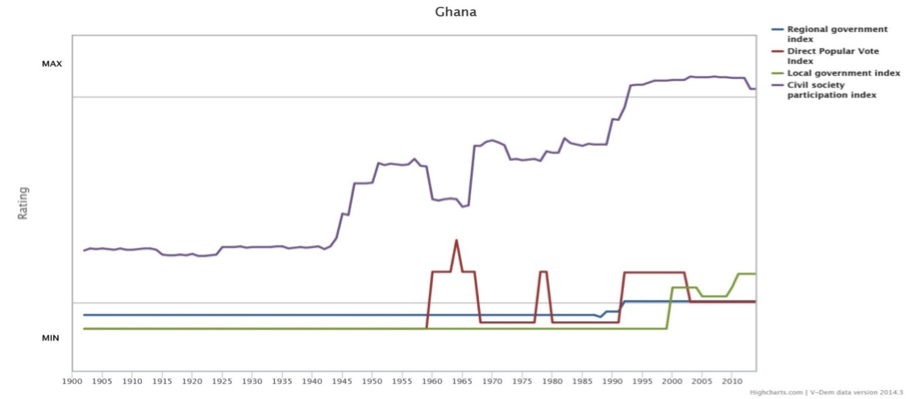Participatory component Ghana
By: V-Dem Staff
Sep 21, 2015
In Ghana, the highest level of participation can be noted in the civil society participation index. It is also a dimension in which the country consistently improves throughout the period, except in the era of one-party rule in the 1960s. In the 1990s, Ghana reaches close to the maximum on this index. This suggests that Ghanaians involvement in the political life of their country has increased substantially. Popular involvement in CSOs is high, women are highly engaged as well and these organizations are routinely consulted by policymakers.
However, Ghana’s score on the direct popular vote index is much lower. This index measures how easy it is to initiate and approve direct popular votes (e.g. citizens’ initiatives, referendums and plebiscites) and how consequential that vote is. A pattern of fluctuating scores for this index following independence is evident, implying that this form of direct democracy has been utilized to some extent during a few episodes.
On the regional and local government indices Ghana shows consistently low scores. This indicates that the ideal of elected sub-national governments operating without interference from unelected actors on the local and regional levels has not been achieved. However, the role of the regional government improves after 1989 and the local government after 1999, although to a modest extent.


